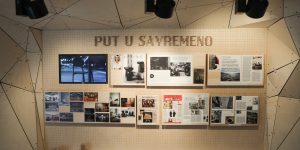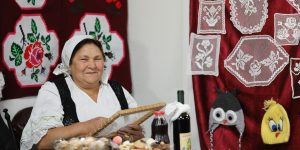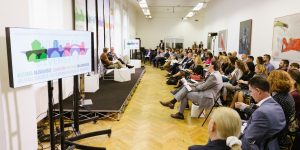How did Venetian mirrors, and Viennese bow ties and gowns come to Stolac? What is the connection between Jajce and Naples and how did Jajce get an Italian name? Why does Travnik have two watch towers and when were they built? What do Madrid, Berlin, Brussels and Višegrad have in common? These are just some of the questions we found answers to through unique guided tours of Stolac, Jajce, Travnik and Višegrad, together with primary school students from these towns as part of the marking of Europe Day in Bosnia and Herzegovina.
With the help of our guides, students had an opportunity to visit and learn about their towns from a different perspective and to learn about common European cultural heritage. We learned about Europeans who lived in those cities and left a mark on their cultural heritage. We talked about the people who shaped the development of Bosnia and Herzegovina; architects, writers, actors, activists, researchers and scientists. We visited famous buildings and monuments; the fortress in Stolac, the watch tower in Travnik, the church of St Mary in Jajce and the Mehmed Paša Sokolović Bridge in Višegrad. After the guided tours, students attended artistic workshops, during which they drew and painted postcards of the most remarkable sights they enjoyed during the tours.
By exploring their towns in this manner, students had an opportunity to visit and explore rich, shared cultural heritage, the reconstruction of which has been supported by the European Union through various projects and activities. Additionally, students learned about the history of their towns and their connections to European capitals and common history and tradition.
In the period from 2004 to 2010, the European Union supported the reconstruction of cultural heritage from the Bosnian medieval period in Travnik and Jajce, including the reconstruction of a part of the medieval Travnik fortress. Assistance was enabled through several projects that aimed to restore cultural heritage and create a unique touristic product in ten local communities connected by a unique chain of cultural and historical treasures (Kakanj, Vareš, Visoko, Zenica, Maglaj, Tešanj, Fojnica, Travnik, Donji Vakuf and Jajce). When it comes to Stolac, or as the locals call it “the museum in the open”, the European Union financed the reconstruction of the architectural heritage of the Old Town of Stolac, mills on the river Bregava and Šarić House – the Branko Šotre Gallery.




